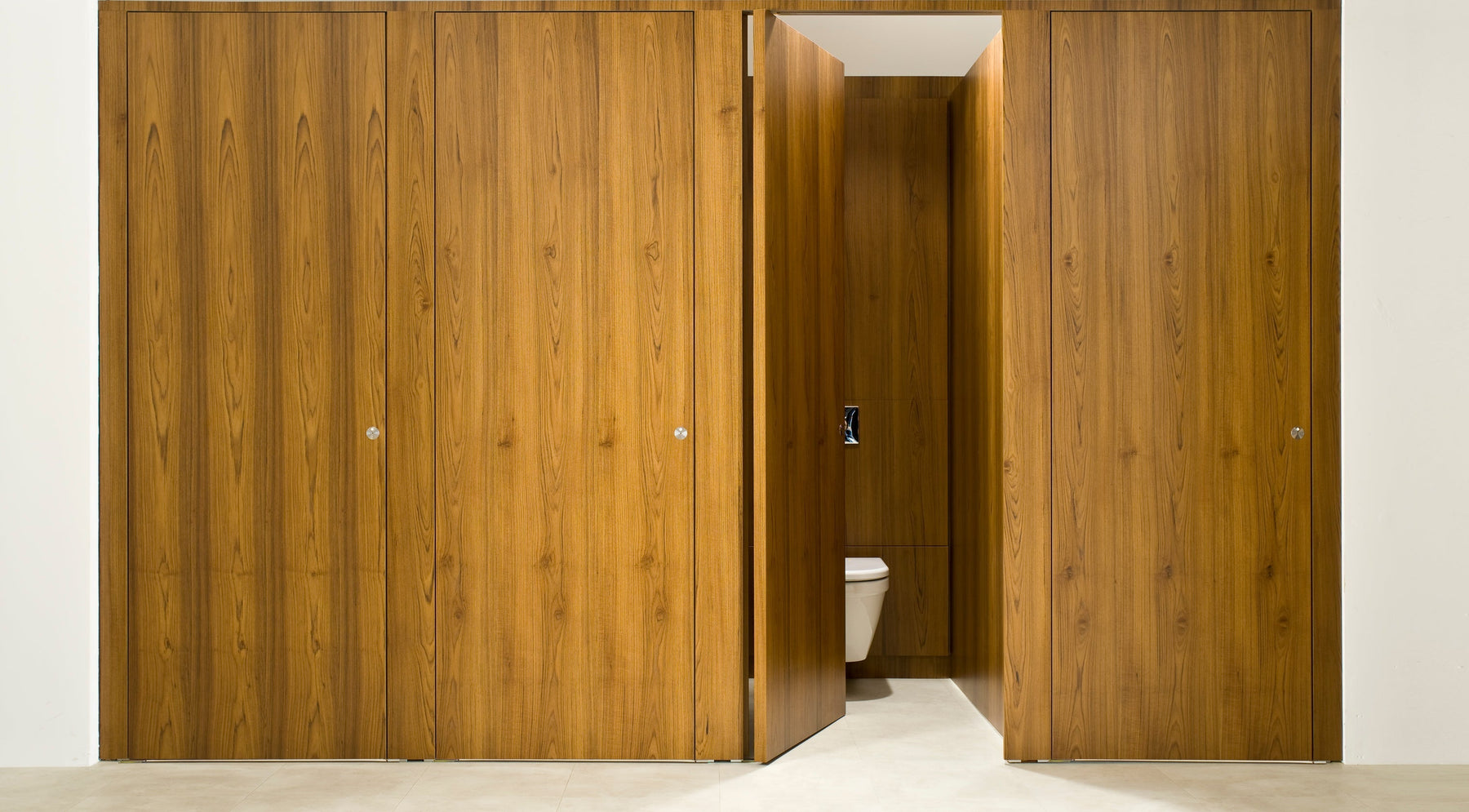
What are the right materials for my bathroom partition?
By: Joey Bleiman, General Manager, Prestige Distribution Inc.
When designing a restroom, choosing the right bathroom partitions is essential for durability, aesthetics, and long-term maintenance. The material you select impacts everything from resistance to wear and tear to hygiene and cost-effectiveness. Here’s a breakdown of the most common toilet partition materials and their best applications.
1. Stainless Steel Bathroom Partitions
Best for: High-end commercial restrooms, offices, airports, luxury spaces
Benefits: Stainless steel toilet partitions are known for their sleek appearance and incredible durability. Resistant to rust, scratches, and vandalism, they also provide a modern aesthetic that enhances any restroom design. Plus, their easy-to-clean surface makes them ideal for high-traffic areas. While they are one of the more expensive options, their longevity and low maintenance costs make them a worthwhile investment.
Risks: Despite its durability, stainless steel is prone to fingerprints and smudges, requiring frequent cleaning to maintain its sleek look. Additionally, it can be more expensive upfront compared to other materials.
Privacy: Stainless steel partitions typically come in standard designs, which may leave small gaps between doors and panels, making them a less optimal choice for maximum privacy.
Pricing: $$$$ (Most expensive)
Customization: Limited in color options, usually available in brushed or textured finishes for aesthetic enhancement.
2. Phenolic Bathroom Partitions
Best for: Schools, healthcare facilities, locker rooms, high-moisture environments
Benefits: Phenolic partitions are made of compressed layers of paper infused with resin, resulting in a highly durable, moisture-resistant material. These restroom partitions are perfect for areas prone to heavy moisture and frequent cleaning, as they resist mold, mildew, and bacteria. Their exceptional impact resistance makes them ideal for high-traffic restrooms.
Risks: While highly durable, phenolic partitions can be more expensive than plastic or powder-coated options. Over time, exposure to extreme humidity or temperature fluctuations may cause slight warping.
Privacy: Phenolic partitions can be customized for enhanced privacy, offering minimal sightlines and optional full-height panels to ensure better enclosure.
Pricing: $$$ (Mid-to-high range)
Customization: Available in a wide range of colors and patterns, making them one of the most customizable options.
3. Plastic (HDPE) Bathroom Partitions
Best for: Gyms, parks, pools, humid environments
Benefits: High-Density Polyethylene (HDPE) toilet partitions are a go-to choice for moisture-rich environments. They are completely waterproof, will not rust or absorb odors, and are resistant to graffiti. Additionally, their durable construction requires minimal maintenance, making them a cost-effective option for schools, pools, and recreational facilities.
Risks: HDPE partitions are typically thicker and heavier, which may require more structural support during installation. They can also be more expensive than powder-coated metal and may fade over time when exposed to direct sunlight.
Privacy: HDPE partitions offer some of the best privacy options available, with gapless doors, extended-height panels, and overlapping edges to minimize sightlines.
Pricing: $$ (Mid-range)
Customization: Offers a variety of colors and textures, making them highly customizable.
4. Powder-Coated Metal Bathroom Partitions
Best for: Budget-conscious projects, offices, schools, commercial buildings
Benefits: Powder-coated metal partitions are among the most affordable bathroom partitions, offering a durable yet cost-effective solution for restrooms in offices and schools. The steel core provides strength, while the powder-coated finish adds a layer of rust and corrosion resistance. Though not as long-lasting as stainless steel or phenolic, they remain a popular choice for projects requiring a balance between budget and durability.
Risks: While cost-effective, powder-coated metal is more prone to rust and corrosion in high-moisture environments. It is also more susceptible to dents and scratches, which can lead to paint chipping and require touch-ups over time.
Privacy: Standard powder-coated metal partitions may have visible gaps around the doors and panels, making them less private than HDPE or phenolic options.
Pricing: $ (Most budget-friendly)
Customization: Available in various colors, but with fewer texture and pattern options than HDPE or phenolic.
Which Bathroom Partition Material Is Right for You?
Selecting the best toilet partition material depends on factors like traffic volume, moisture exposure, and budget. If you’re looking for longevity and a premium look, stainless steel is your best bet. For moisture resistance and durability, phenolic or plastic (HDPE) partitions are ideal. If cost is a major factor, powder-coated metal is an excellent option. If privacy is a priority, HDPE partitions provide the best solutions with gapless designs and full-height options. For the most flexibility in colors and custom designs, phenolic and HDPE partitions offer the most options.
Looking to upgrade your restroom partitions? Contact Prestige Distribution [email protected] for expert guidance and high-quality solutions tailored to your project needs!
